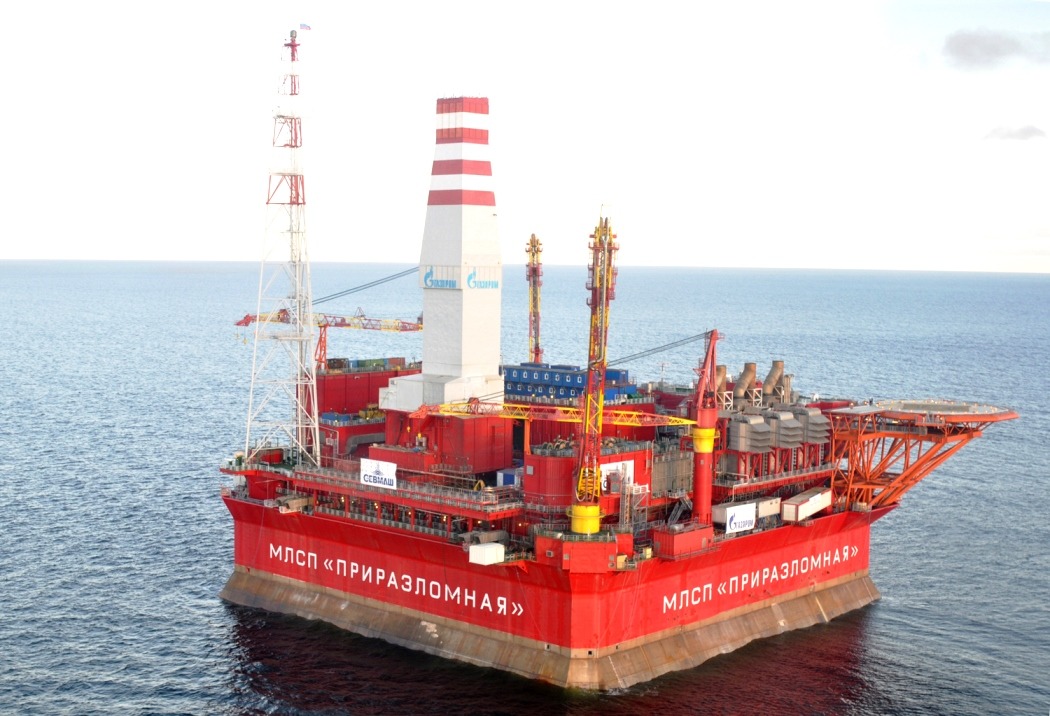Greenpeace vs Gazprom: The Problem - Part 1
Greenpeace vs Gazprom: The Problem - Part 1

Greenpeace vs Gazprom: The Problem - Part 1
A tactical analysis of the utilisation of environmental tifosi to combat Arctic drilling in the Champions League’s most important fixture. Read the whole series here.
By Jake Cohen
Amidst the backdrop of the Champions League, there is another competition being played out, and for all of the prestige and prize money at stake for the club that emerges victorious at the Estádio da Luz in Lisbon on 24 May, the stakes are actually much higher off the pitch.
Greenpeace has launched a very public campaign against Gazprom’s oil production in the Arctic and has decided to use the Champions League as platform from which to (rather loudly) protest what they consider to be dangerous and unethical activities on the part of the state-owned Russian energy company.
This series of posts endeavors to provide an in-depth look at Greenpeace’s decision to incorporate Champions League football into their protests against Arctic drilling. However, before discussing how the Champions League has become an environmental battleground, a bit of context is first required in order to understand what led to Greenpeace deciding it was necessary to force itself and its message onto one of football’s biggest stages.
Gazprom is the second-largest oil company in the world, producing around 9.7 million barrels of oil per day, according to Forbes. The company earned £15.4 billion in profit during the third financial quarter of 2013 alone. In December 2013, Gazprom began oil production in the Arctic (specifically, in the Prirazlomnoye field) after more than a decade of delays and almost twenty-five years after the oil field was first discovered.
Reuters calls the project “one of the most controversial energy projects” in history, due to the increased risk of an oil spill that would no doubt wreak havoc on the already-fragile Arctic ecosystem. For those interested in learning more about arctic oil exploration and drilling, I strongly recommend taking a look at the March 2012 issue of Oil Magazine, a publication from ABO, an independent organisation based in Rome that reports on the energy sector. The publication was first brought to my attention by Karl Mathiesen at the Guardian.
Gazprom has invested more than £3.6 billion into this project and the sizable investment is largely due to the strategic importance of the region and the fact that Gazprom is controlled by the Russian government. According to Reuters, “Russia is vying with Canada, Denmark, Norway and the United States for control of the oil, gas and precious metals that would become more accessible if global warming shrinks the Arctic ice cap.”
While the total investment is a virtually insignificant percentage of Russia’s annual GDP, £3.6 billion is still £3.6 billion. The opportunity for Russia to plant its flag in the Arctic and get a head start on building the infrastructure necessary to exploit the region’s natural resources likely more than justifies the cost of the project from not only a financial, but also a strategic and geopolitical perspective.
According to Gazprom, the Prirazlomnoye field is an “essential element” of their oil business development strategy. The field contains 72 million tons of oil, which is the equivalent of well over 500 million barrels. This represents about £35 billion worth of oil, which would be a considerable return on their initial investment (based on crude oil prices as of 19 February).
It should be noted, however, that the world consumes about 85 million barrels per day, so if that field was our only source of oil, we’d run out in less than a week. The Prirazlomnoye field is tiny when compared to the world’s biggest oil fields, but it is only the first step in Gazprom implementing its Arctic strategy.
The Prirazlomnoye field barely scratches the surface of the Arctic’s potential oil reserves. In a 2008 study conducted by the United States Geological Survey, there are potentially 90 billion barrels of recoverable oil in the Arctic Circle, which is more than the proven reserves of both Russia and the United States combined and represents almost £6 trillion worth of oil.
When we take into account that the Arctic also has 1,670 trillion cubic feet of recoverable natural gas and 44 billion barrels of natural gas liquids (representing 20 percent of the world’s total natural energy resources), it becomes easy to see just how important it is for governmental and energy industry stakeholders to establish a presence in the Arctic.
With the massive amounts of natural resources and money on the line and the rush to start harvesting the Arctic bounty as climate change causes the ice to melt, making it possible to drill. Both Greenpeace and independent scientists conclude that an oil spill is inevitable. This is obviously worrisome, but the concern is amplified by the remote location and lack of technology available to effectively contain a crude oil spill in icy waters. An oil spill could wreak havoc on the already-fragile Arctic ecosystem.
Greenpeace has employed an extremely clever marketing ploy in its decision to utilise one of the most-watched sporting events in the world to raise awareness of its campaign against Gazprom’s Arctic drilling. However, the beauty of this strategy cannot be fully appreciated until one realizes that Gazprom happens to be one of the six primary sponsors of the Champions League and Greenpeace is upstaging its opponent on Gazprom’s home pitch.
Read: Part 2 - The Campaign








